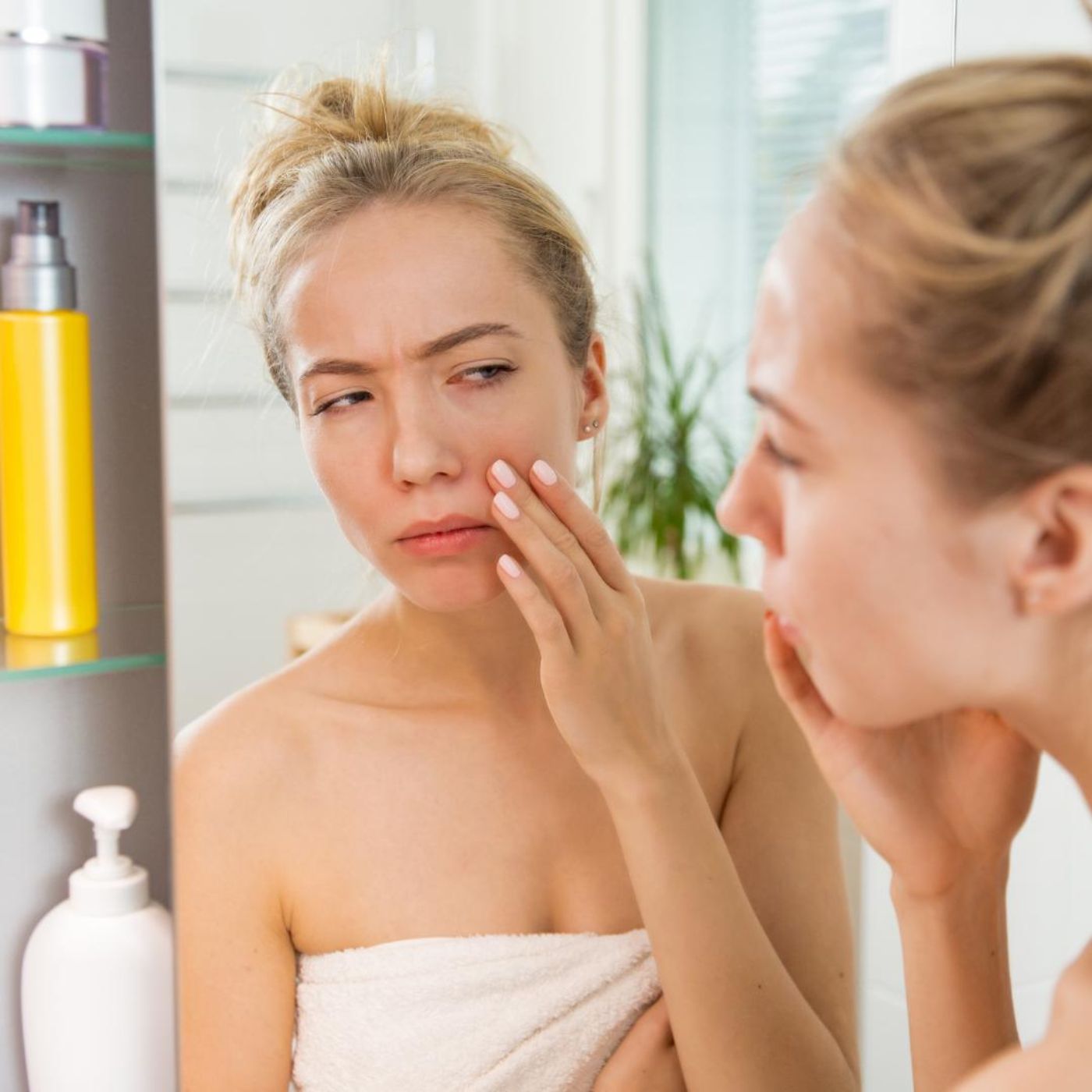
We understand it can be daunting and overwhelming when embarking on the journey of avoiding toxic ingredients in your cosmetics.
The alarming truth is that the law is very relaxed and does not protect the consumer against all these toxins found in skincare products. Products are allowed to be marketed without government approval of these dangerous ingredients.
Health issues linked to these toxic chemicals range from skin allergies to hormonal problems and even cancer.
This is why we wanted to outline some of the main ingredients that you will still commonly find in so many skincare and cosmetic products, many disguised by long complicated names, that you can easily avoid with a little knowledge and common sense.
Psst! GoodieCo contains none of these ingredients.
Synthetic fragrances
First of all, let’s mention why cosmetic and skincare companies would want to add synthetic fragrances to their products. Our sense of smell is a powerful thing. Linked to both our taste buds and our memory, a delightful fragrance can move you to purchase one product over another, based on your own personal taste, and also your past experience. The thoughts and memories that we associate with a scent can be very influential, so the more a product can influence you to purchase it, the better!
But in general, synthetic fragrances are not something that you want in your skincare if you can avoid it. They are often mixtures of various chemicals which come from petroleum or crude oil that produce a desired scent.
Often the ingredients for synthetic fragrances are not listed in the ingredients list of products, yet they include harsh toxins like benzene derivatives, aldehydes, toluene and phthalates.
They can cause a range of not-nice reactions, such as skin irritation, allergies, asthma, eczema, headaches, hives, nausea, psoriasis, wheezing and contact dermatitis.
If you can, opt for fragrance-free products, or naturally scented products, just like all our GoodieCo range.
Silicones
Silicones are listed under dozens of names, which makes them hard to identify and avoid, especially when they are so widely used. So why do cosmetic and skincare companies like to use silicones? They give products a silky smooth, spreadable and luxurious texture. They fill crevices in your skin, to give a temporary, smooth surface look and feel. Hydrophobic silicones are also water-resistant, creating a seal over your skin, so that companies can claim hydration effects.
Why should you avoid them?
- Silicones trap debris in your pores as they form a seal over your skin.
- This can lead to acne and breakouts.
- Your skin can become dry and dehydrated, as your skins natural barrier becomes impaired, and is less able to shed dead layers of skin cells
- Silicones are difficult to remove. The most common silicone, dimethicone, is extremely heavy and leaves a coating on the skin unless it is carefully removed. This is often why people see such a difference from nightly double cleansing, because it's properly removing the silicones from your skin—a single pass with a regular face wash simply isn't enough!
- They block other active ingredients from absorbing and doing their job.
What to look for? Words that end in one of these:
-Cones: For example, amodimethicone, cyclomethicone, dimethicone, methicone, trimethicone, trimethylsilylamodimethicone.
-Conols: For example, dimethiconol.
-Silanes: For example, bis-PEG-18 methyl ether dimethyl silane, triethoxycaprylylsilane, triethoxycaprylylsilane crosspolymer.
-Siloxanes: For example, cyclopentasiloxane, polydimethylsiloxane, siloxane.
Siloxanes
This one is a big no! These silicone-based compounds are used in cosmetics to soften, smooth, and moisten. They make hair products dry more quickly and deodorant creams slide on more easily. They are also used extensively in moisturizers and facial treatments.
Siloxanes are toxic, persistent, and have the potential to bioaccumulate in aquatic organisms. It has also been classified as an endocrine disruptor, interfering with human hormone function and a possible reproductive toxicant that may impair human fertility.
In high doses, siloxanes has been shown to cause uterine tumours and harm to the reproductive and immune systems, and influence neurotransmitters in the nervous system. Sounds scary, right! But popular companies still use some form of siloxanes in their products, so it’s always a good idea to read your product label or just stick to completely natural skincare products (like GoodieCo).
Parabens
Parabens are a group of chemicals used as preservatives to stop bacteria growing in food, cosmetics (from shampoo to toothpaste to foundation). You don’t want bacteria in your skincare, right? Of course not, but parabens are nothing to ignore. Parabens can disrupt hormone function by mimicking oestrogen. Too much oestrogen can trigger an increase in breast cell division and growth of tumours, which is why paraben use has been linked to breast cancer and reproductive issues.
As well as these scary effects on humans, parabens have been found to for the first time in marine mammals, likely accumulating there when the products we use are washed into the water system and into the environment.
With so many preservative-free options available these days, there really is no reason to be using products containing parabens.
Look for anything with “paraben” on the end, like methylparaben and ethylparaben.
Formaldehyde
Now, you may know that formaldehyde as a natural preservative, which is why it is used in skincare and cosmetic products. It is actually a naturally occurring chemical, that nearly every living animal and plant produces at various levels throughout their life.
While exposure to low levels of formaldehyde is not dangerous, high exposure to the chemical is not so great.
High levels of exposure to formaldehyde, particularly in cosmetic products, can cause:
- sensory irritation
- skin sensitisation
- breathing difficulties
- asthma
- cancer, in circumstances where there is chronic high exposure.
Our advice, once again, is sticking to preservative-free skincare and cosmetics. Look out for formaldehyde labelled as DMDM hydantoin, imidazolidinyl urea, diazolidinyl urea, quaternium 15, bronopol, 5-bromo-5-nitro-1,3 dioxane, and hydroxymethylglycinate.
Synthetic Colours
Many artificial colours are made by using coal tar, petroleum or heavy metals salts like arsenic and lead. When absorbed on our skin, these can increase the risk of irritation, blocked pores, breakouts and sensitivity. Some have even been linked to carcinogenic effects. When shopping for skincare, there is really no need for artificial colour in your product, as long as the product itself is effective!
Cosmetics are a different story. Many of them, such as lipstick and blush, are primarily for their colour.
However, there are plenty of natural alternatives to create beautiful colours in without relying on synthetic substances. Foods like coffee and molasses, seaweed powder, clays and spices or for primary colours, ingredients like turmeric powder (yellow), beet root powder (red), and woad powder (blue) can create beautiful shades without putting your health at risk.
